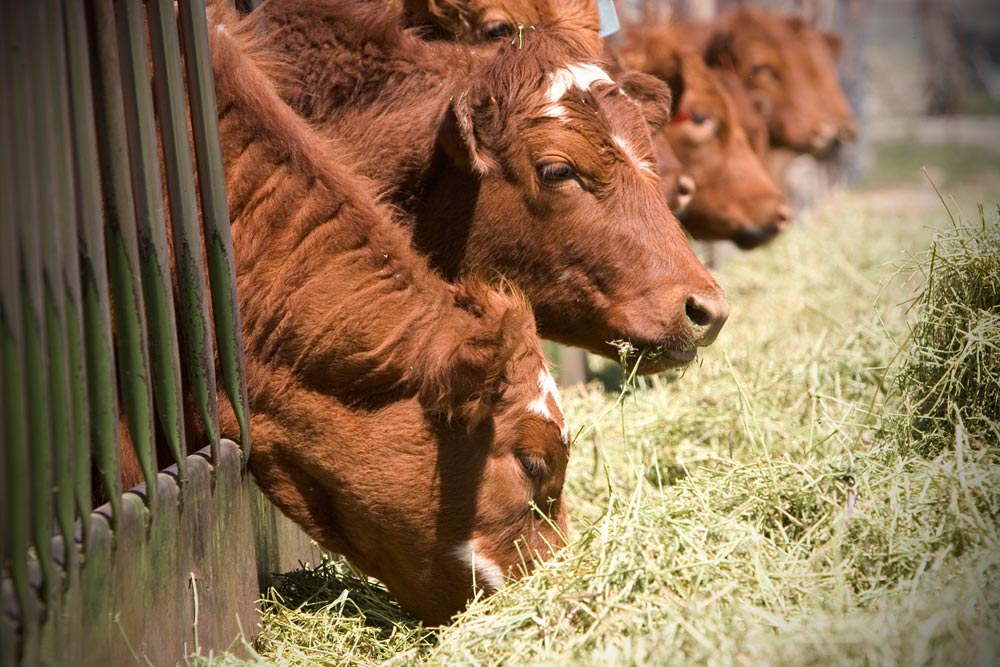
Antibiotics
In 2003, Bon Appétit became the first food service provider to take a stance on antibiotics abuse in agriculture in order to stop the major public health crisis that was already underway and has only gathered strength in the years since.. Concentrated Animal Feeding Operations, aka CAFOs or “factory farms,” routinely put unprescribed antibiotics in the food and water of cows, pigs, and chickens. This overuse has resulted in the rise of antibiotic-resistant “superbugs” that are sickening and killing thousands of people. (See the Centers for Disease Control’s page about them.)
First, a little background. Antibiotics are drugs such as penicillin, amoxicillin, and tetracycline that are used to kill or inhibit the growth of harmful bacteria. The Food and Drug Administration estimates that 80 percent of all antibiotics sold in this country are given to farm animals, both to prevent the illnesses one would expect from overcrowded, unsanitary conditions and also to make the animals grow faster. (While this side effect is not entirely understood, some scientists are hypothesizing it’s because the drugs kill off certain bacteria in the animals’ digestive systems.) Many of these antibiotics belong to classes of drugs used in human medicine. When antibiotics are used too frequently, the harmful bacteria they target become resistant to the drug.
In fact, bacteria can develop into a completely different strain that cannot be killed by the normally prescribed antibiotic. Drug-resistant bacteria jump from factory farms to people through food (see Consumer Reports’ turkey tests), air and water, and livestock workers. One deadly drug-resistant type of staph bacteria called MRSA kills approximately 19,000 people annually, according to the Infectious Diseases Society of America. Such superbugs are especially threatening for people with compromised immune systems including infants, elderly people and patients with cancer receiving chemotherapy.
HORMONES
Artificial hormones are primarily used in cattle in the dairy and beef industries, to force them to make more milk or to gain weight faster, respectively. (Note: The use of hormones in pork and chicken is prohibited by the USDA, but other growth promoters are sometimes used, such as ractopamine in pork.)
Recombinant bovine growth hormone (known as rBGH and, in its patented form, as rBST) is a genetically engineered hormone that is injected into dairy cows to raise their milk production. It has been shown to also increase the rates of mastitis and lameness in cows, which raises concerns from an animal-welfare standpoint. A significant body of scientific data has also linked its use to possible increases in certain types of cancer and to antibiotic resistance in humans.
WHAT BON APPÉTIT IS DOING
There is much that needs to change in order to preserve antibiotics’ power for human health. Bon Appétit Management Company CEO Fedele Bauccio, who served for two years on the Pew Commission for Industrial Farm Animal Production, has spoken before Congress several times on the antibiotics crisis and the need for the FDA to regulate the use of drugs in farm animals. (Here’s one of the statements he made [PDF].)
We also support producers who are not abusing antibiotics or hormones, through the following sourcing commitments:
- We buy chicken and turkey raised without the routine, non-therapeutic use of antibiotics (since 2003).
- We source our ground beef from animals never, ever given antibiotics or artificial hormones (since 2007).
- Our milk and yogurt comes from cows not given bovine growth hormone, aka rBGH (since 2002).
- Our pork comes from animals never given antibiotics or ractopamine, a growth promoter (since early 2016).
As the first food service company to address this issue, we have had a patchwork of different antibiotic policies for many years. In March of 2016, we began working with the Johns Hopkins Center for a Livable Future — a group of experts on antibiotic use in food production at the Johns Hopkins Bloomberg School of Public Health — to overhaul and update our antibiotics standards into a more cohesive and far-reaching package.
Learn more